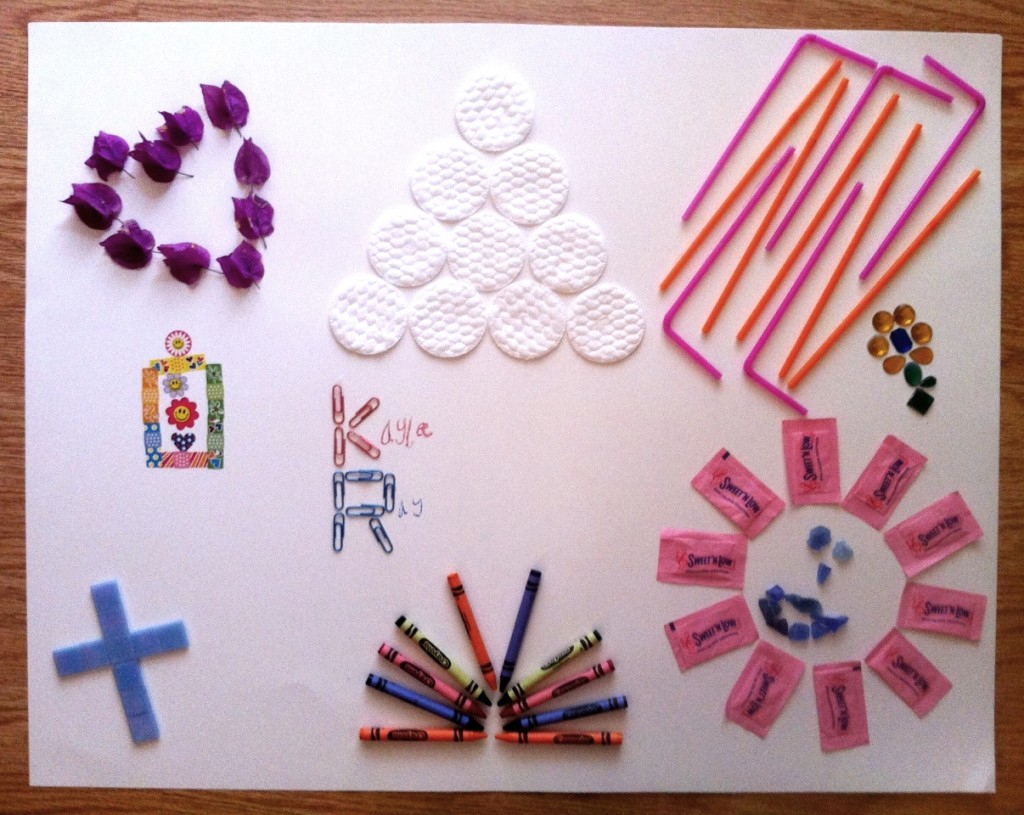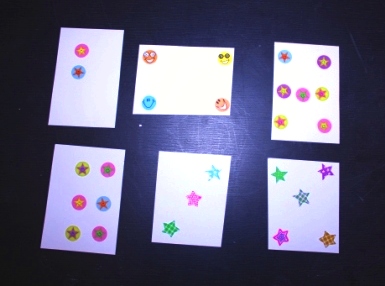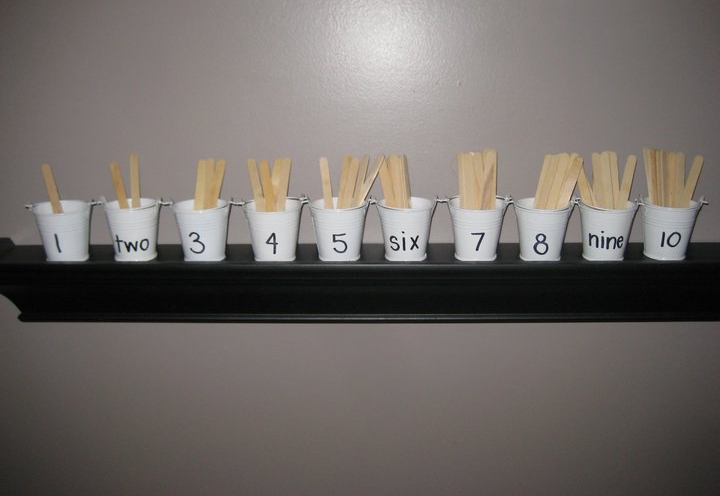My sister Ali shared an activity that she and her 5 year old, Kaylee, worked on together for a Kindergarten class assignment. Today, we are going to simplify the activity for our 3 year olds OR use the activity for our 5 year olds. My sis is an AWESOME Mommy Teacher to both her 5 year old and her 2 year old girls.
Here is Ali’s description of the activity for your 5 year old,
but stay tuned for my modification for your 3 year old:
“This was for her 100th day of school; it was a home/family project that Rick, Kaylee’s dad, joked was more of mommies’ project. The assignment was to find 10 items around the house in groups of 10 and glue those things in groups on a poster board. The school gave examples like pennies, paperclips, etc. Kaylee is very creative and I always call her “My Little Picasso” (which she got very mad the first time thinking I was calling her a bad name), but she wanted to do more colorful and unique items for her project. For learning purposes, any small items would work and not take as long as we took, but she was “creating art” so to speak and the 2 hour project began. We ran around the house finding a huge variety of items, jewels, sugar packets, even cut-up glass tile samples. We counted each item up to 10 and spread them out in groups on the poster board. I was prepared for her to just start gluing them down when she said she wanted to make pictures out of each… put the bougainvillea tree flowers into a heart, the colors into a sunset, the sugar packets into a sun with rocks as the face in the sun. The only input I had was the ‘K’, ‘R’ paperclips for her name, and the jewels in the shape of the flower. When everything was glued down, we counted by 10’s and 1’s to 100. It was really fun to do together because she was not only learning, but was being creative at the same time.
They also had another assignment that same week to hug 100 people. It could be the same person on the list several times (like moms, dads and siblings), but basically giving a hug to someone who needed it. She must have given over 40 hugs to the staff and even customers at Lupe’s Restaurant and the dentist… she is already a social butterfly, but it really put a smile on everyone’s face too, amazing what a hug can do!”
I LOVE this whole assignment and this is the kind of hands-on project that really creates a sweet opportunity for shared learning and chances to BUILD on what your child already knows. If you have a 3 year old, collect as many groups of 10 things as your little ones attention span can handle….which might only be ONE group of 10…..and that is fine; consider it their work of art because you want quality more than quantity. Don’t try to do too much at one time; leave plenty of room for brain breaks (movement, outside playtime, music, snack, etc.). Finally, MODEL counting the objects by ones up to the number of objects you collected. And you can go ahead and INTRODUCE modeling counting by 10s if you collect more than one group. But make sure your little one has mastered counting to 10 by 1’s first (one object at a time).





